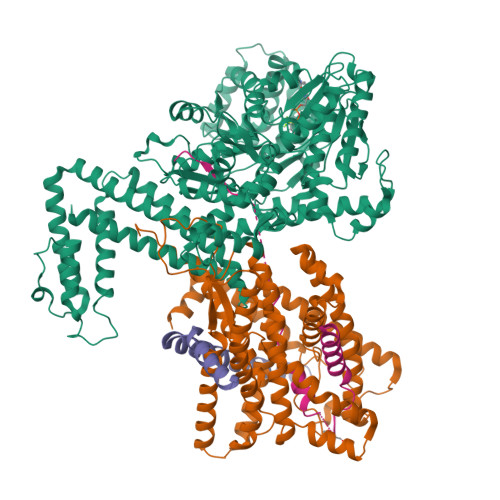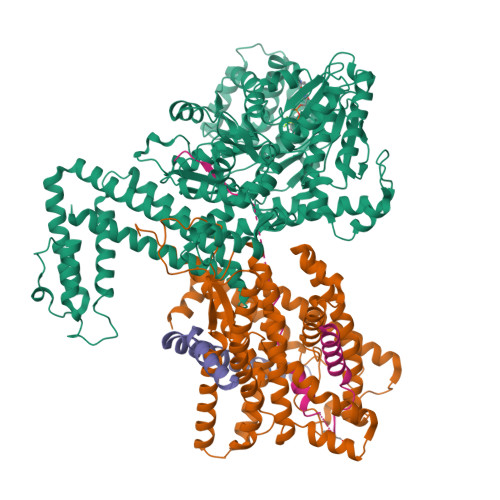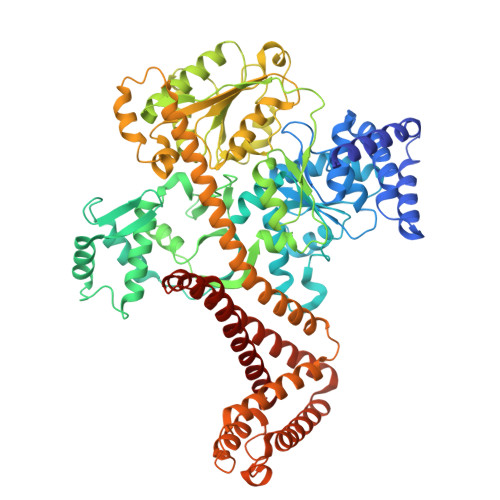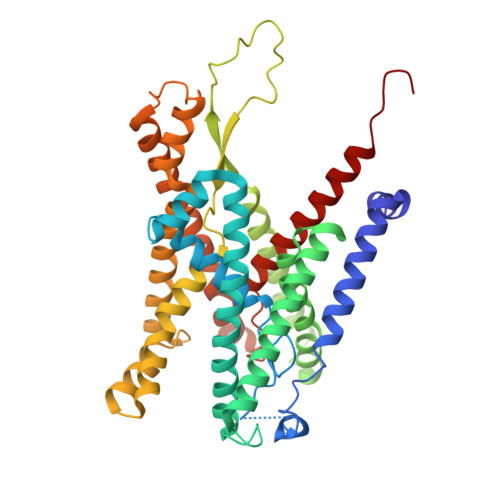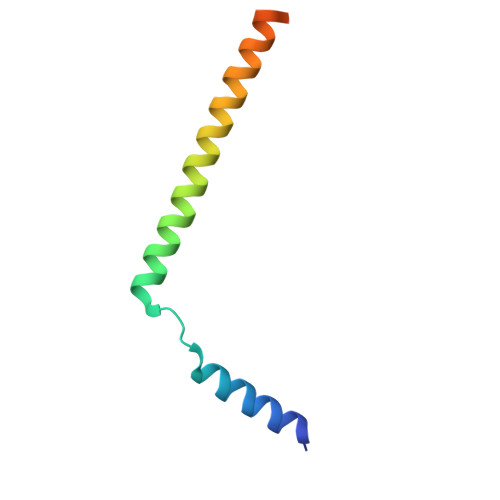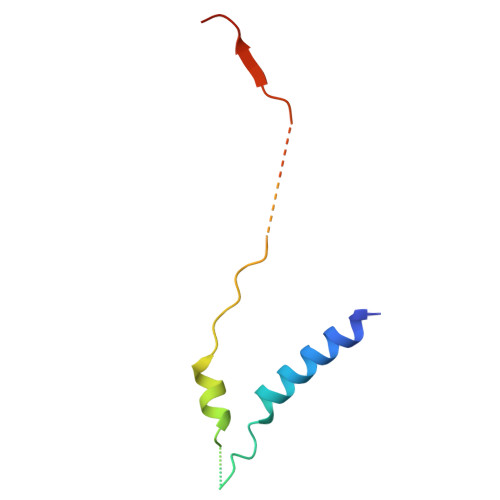SecY translocon chaperones protein folding during membrane protein insertion.
Ou, X., Ma, C., Sun, D., Xu, J., Wang, Y., Wu, X., Wang, D., Yang, S., Gao, N., Song, C., Li, L.(2025) Cell
- PubMed: 39978345
- DOI: https://doi.org/10.1016/j.cell.2025.01.037
- Primary Citation of Related Structures:
8Y9Y, 8Y9Z, 8YA0, 8YA2, 8YA3, 8YAS - PubMed Abstract:
The Sec translocon is vital for guiding membrane protein insertion into lipid bilayers. The insertion and folding processes of membrane proteins are poorly understood. Here, we report cryo-electron microscopy structures of multi-spanning membrane proteins inserting through the SecY channel, the Sec translocon in prokaryotes. The high-resolution structures illustrate how bulky amino acids pass the narrow channel restriction. Comparison of different translocation states reveals that the cytoplasmic and extracellular cavities of the channel create distinct environments for promoting the unfolding and folding of transmembrane segments (TMs), respectively. Released substrate TMs are either flexible or stabilized by an unexpected hydrophilic groove between TM3 and TM4 of SecY. Disruption of the groove causes global defects in the folding of the membrane proteome. These findings demonstrate that beyond its role as a passive protein-conducting channel, the SecY translocon actively serves as a chaperone, employing multiple mechanisms to promote membrane protein insertion and folding.
Organizational Affiliation:
State Key Laboratory of Membrane Biology, Peking-Tsinghua Center for Life Sciences, School of Life Sciences, Peking University, Beijing, China.








